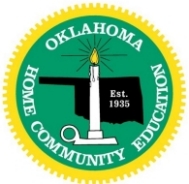|
|
Oklahoma County, Oklahoma Cemeteries
|
Indian Burial Ground Council Grove
|
|
|
The historic Council Grove area included the land south of 39th Street (Highway 66)
extending to the Rock Island tracks and from the North Canadian River, now known as the Oklahoma River, east for three miles.
Montford T. Johnson, whose wife was Chickasaw Indian, was a successful rancher and hog raiser in early times.
His cattle grazed over the Council Grove area long before it was set aside as a government reservation or was opened to homesteaders.
The headquarters for the "Johnson Ranch" were at Silver City, which is now the town of Tuttle.
History dates back to a good spring of water near the river and a large grove of oak, cottonwood and elm trees which furnished
abundant shade. It was called Council Grove because the tribes of the Plains Indians, including the Kiowas and Comanches,
gathered there at various times for council meetings.
The dam for Lake Overholser was completed in 1916 near the site of the Chisholm Trading Post opened by Jesse Chisholm in 1858.
The "old spring" was located between the NW 10th Street bridge and the Lake Overholser Dam in the willows below the dam.
Mr. J. Roy Abernathy's father, John Abernathy, an '89er, owned and operated a combination store, post office, and railroad station
in the eary nineties. He tells of seeing numbers of Indians gathered at the spring periodically even after he was in business.
He reported that there was an Indian burial ground nearby. However, no records have been found to substantiate this.
By now both the school and community were called Council. The word Grove was dropped.
In 1865 a Council was called between Comanches, Kiowas and Confederate leaders. In 1889 the land was opened for settlement.
|
|
|
|
|
|

